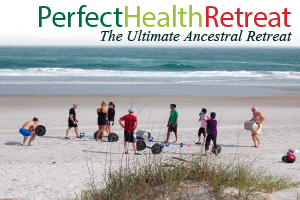I’ve been on several podcasts and radio shows recently, and three shows are now available online. They are:
- Nourish Balance Thrive with Christopher Kelly. We talked about caring for infants, since our Luke is 5 months old and Christopher has a 15 month old daughter. We also discussed the retreats, the healthfulness of low-carb diets, and other topics.
- Clarity2Thrive with Ben Lowrey. We talked about the importance of intermittent fasting, why fats are a healthy part of the diet, circadian rhythms and longevity.
- Live Toxic Free with Debra Lynn Dadd, a prominent green consumer advocate. This is a live radio program serving the Washington DC area, and I was the first guest of the new year. We covered a broad range of topics. For those who prefer reading to listening, Debra has produced a transcript.
Enjoy!
P.S. We still have a few spaces available for the May Perfect Health Retreat. If you are interested, visit here for more info or email me at paul@perfecthealthretreat.com.












Recent Comments